Imagine walking into a room where everything seems to be in its proper place: every piece of furniture, every piece of art, and every detail follows an almost invisible rhythm that guides the eye naturally. There's an immediate sense of comfort and order. The space exudes harmony. This is the power of symmetry in interior design, creating stability, tradition, and a sense of security.
Now, imagine a modern studio, where pieces of different sizes and colours balance each other in unexpected ways. The eye jumps from one focal point to another, arousing curiosity, surprise, and a sense of movement. The result is the effect of asymmetry, which defies standards and transforms spaces into dynamic and memorable experiences.
Both symmetry and asymmetry are essential tools for achieving balance in design and creating harmonious interiors. And while these ideas manifest themselves most clearly in the spaces we inhabit, they are also present in art and photography, in nature and biology, as well as in graphic and web design, revealing universal patterns that guide human perception.
This guide adresses these dimensions, showing not only how to create visual balance but also why these strategies work, offering a cultural, practical, and inspiring perspective aligned with LUCE's ALMA philosophy of transforming spaces into memorable experiences.
Symmetry and asymmetry are universal principles that influence visual perception and can be applied in various areas to create balance in design.
In art and photography, symmetry conveys order and harmony, while the rule of thirds represents asymmetrical balance, creating movement and visual tension. These techniques demonstrate that visual balance depends not only on symmetry but also on the conscious arrangement of distinct elements.
In nature and biology, symmetry is visible in the human body and many animals, offering comfort and familiarity to the observer. Asymmetry is evident in internal organs and certain plants, sparking interest and attention. These natural patterns offer valuable insights for interior design, enabling the creation of harmonious interiors that strike a balance between stability and dynamism
In graphic and web design, symmetrical layouts convey confidence and clarity, while asymmetrical compositions create focus and movement, strategically guiding the user.
Understanding these applications demonstrates that balance in design can be achieved through symmetry, asymmetry, or a combination of both, always to create visually balanced and pleasing spaces.
While symmetry is often associated with order and stability, asymmetry offers unique opportunities for creating harmonious interiors with dynamism and personality. The key lies in asymmetrical balance, which allows for visually balanced spaces without resorting to perfect mirroring.
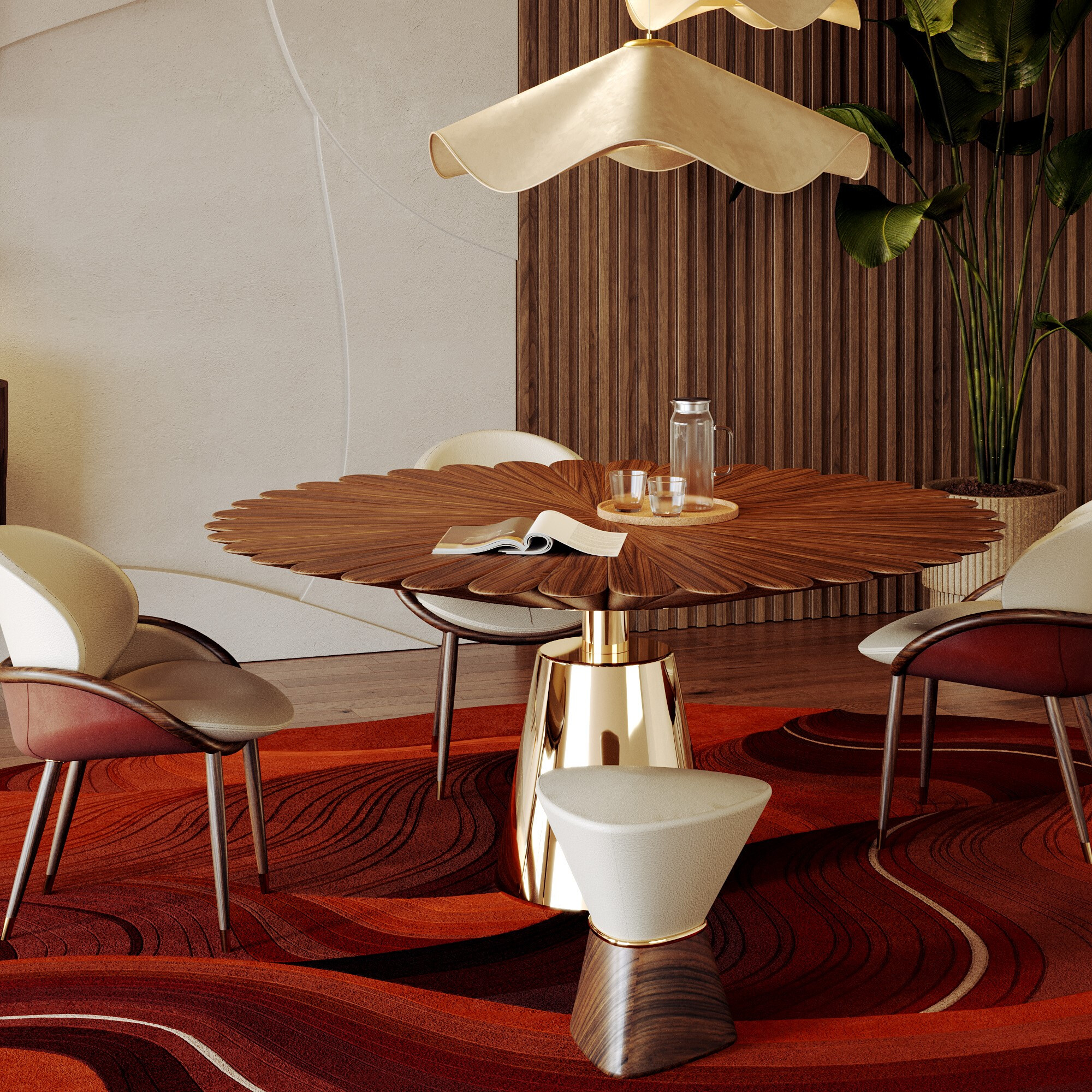
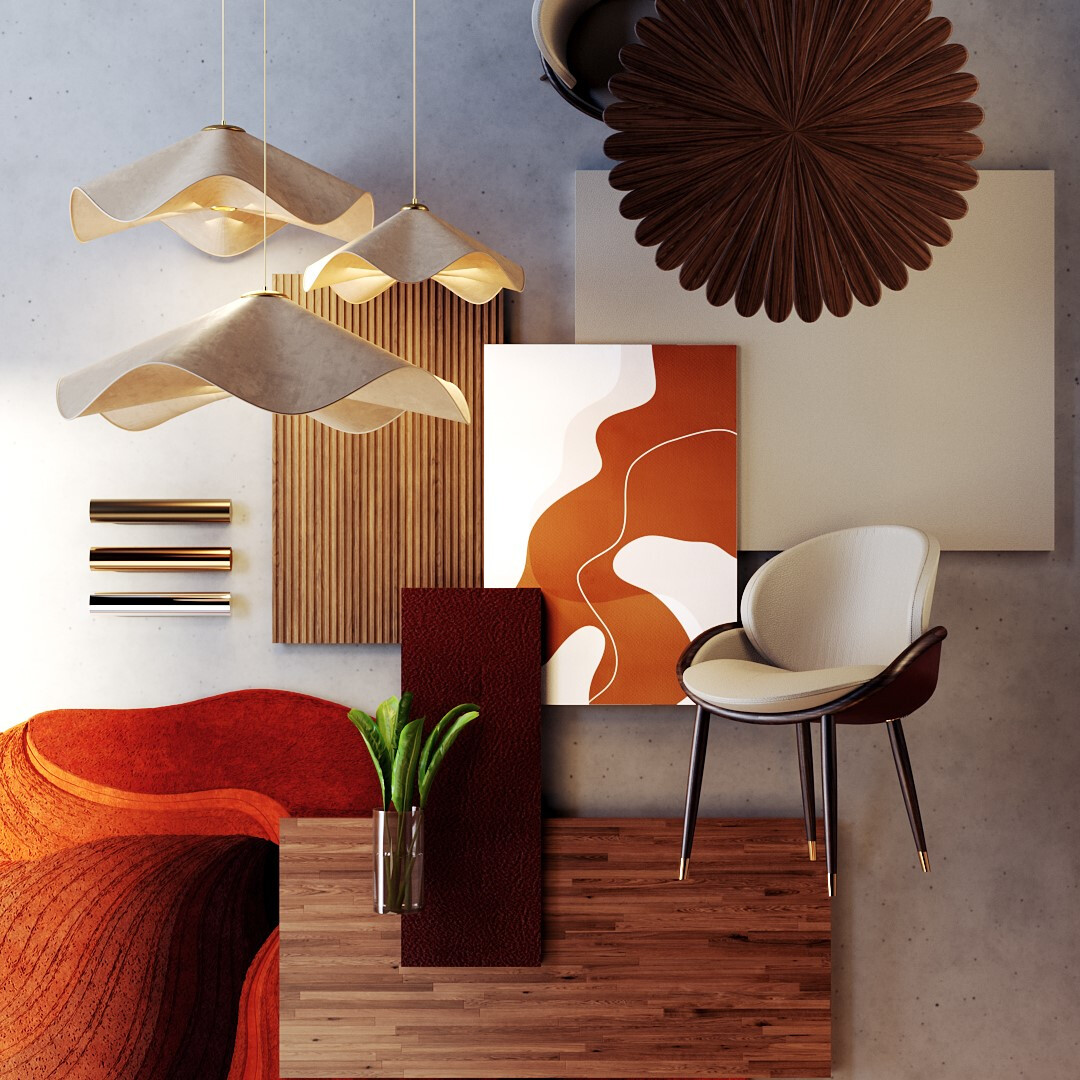
Visual weight: Different elements can create balance if their visual impact is equal. For example, a sofa like the Dom Sebastião by ALMA de LUCE can offset the Roatan side table. Visual weight depends not only on size, but also colour, texture, and shape.
Tension and contrast: Asymmetry creates movement and interest by using contrasting colours, materials, or shapes. This controlled tension guides the eye through the space, making the composition more engaging.
Rule of thirds: A classic asymmetrical balancing technique that divides space into horizontal and vertical thirds, positioning essential elements off-centre for greater dynamism.
Asymmetry allows you to combine visually distinct elements, but it's how these elements interact that determines whether the result is harmonious or chaotic. Some key strategies include:
Balanced contrast: mixing distinct colours, shapes, or materials so that each element complements the other without overpowering. For example, a colourful rug like ALMA de LUCE's Antelope Canyon perfectly balances a piece of furniture, such as the Bonsai dining table with its White Estremoz marble top, creating interest without losing cohesion.
Proportion and scale: varying the sizes of objects in a calculated way ensures that no element dominates the space, maintaining balance in the design even in complex compositions.
Strategic focal points: such as the Polonceau cabinet from ALMA de LUCE, can serve as a visual anchor, guiding the eye and helping to organise the room visually.
Subtle repetition of patterns or colours: Despite the diversity of elements, small repetitions help to create unity and fluidity in the area.
By applying these techniques, it's possible to create harmonious interiors that explore the visual richness of asymmetry without sacrificing comfort or functionality. The result is a space that attracts attention, reflects personality, and maintains a sense of aesthetic cohesion.
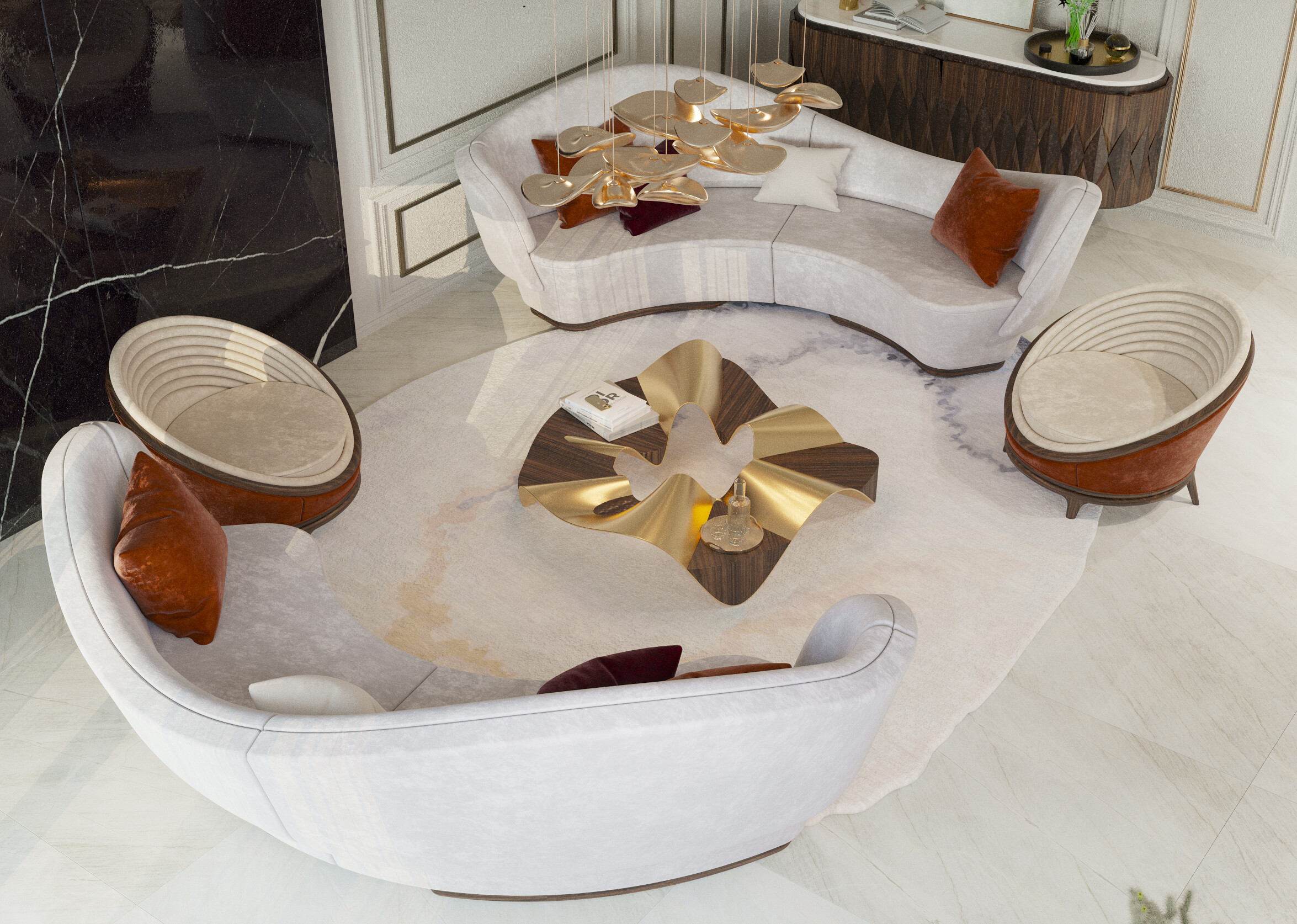
The human relationship with symmetry and asymmetry is not new; it is rooted in cultural history and the way the brain processes visual patterns.
Symmetry has been valued throughout the centuries as a symbol of beauty, balance, and perfection. Civilisations such as the Greeks and Egyptians utilised it in architecture and art as a symbol of order and harmony.
Psychologically, the human brain tends to prefer symmetrical patterns because they convey stability and predictability. Neuroscience studies confirm people perceive symmetrical faces and shapes as more attractive and associate them with health and safety. In interior design, this preference translates into spaces that evoke comfort, calm, and a sense of familiarity.
Asymmetry, in turn, attracts attention and stimulates curiosity. Historically, it was explored in modern artistic movements, such as Cubism and Dadaism, to challenge norms and provoke new aesthetic perceptions.
Psychologically, asymmetrical spaces generate dynamism and movement, inviting the observer to explore rather than remain static. In interior design, asymmetry can convey innovation, creativity, and modernity, eliciting a more active emotional response.
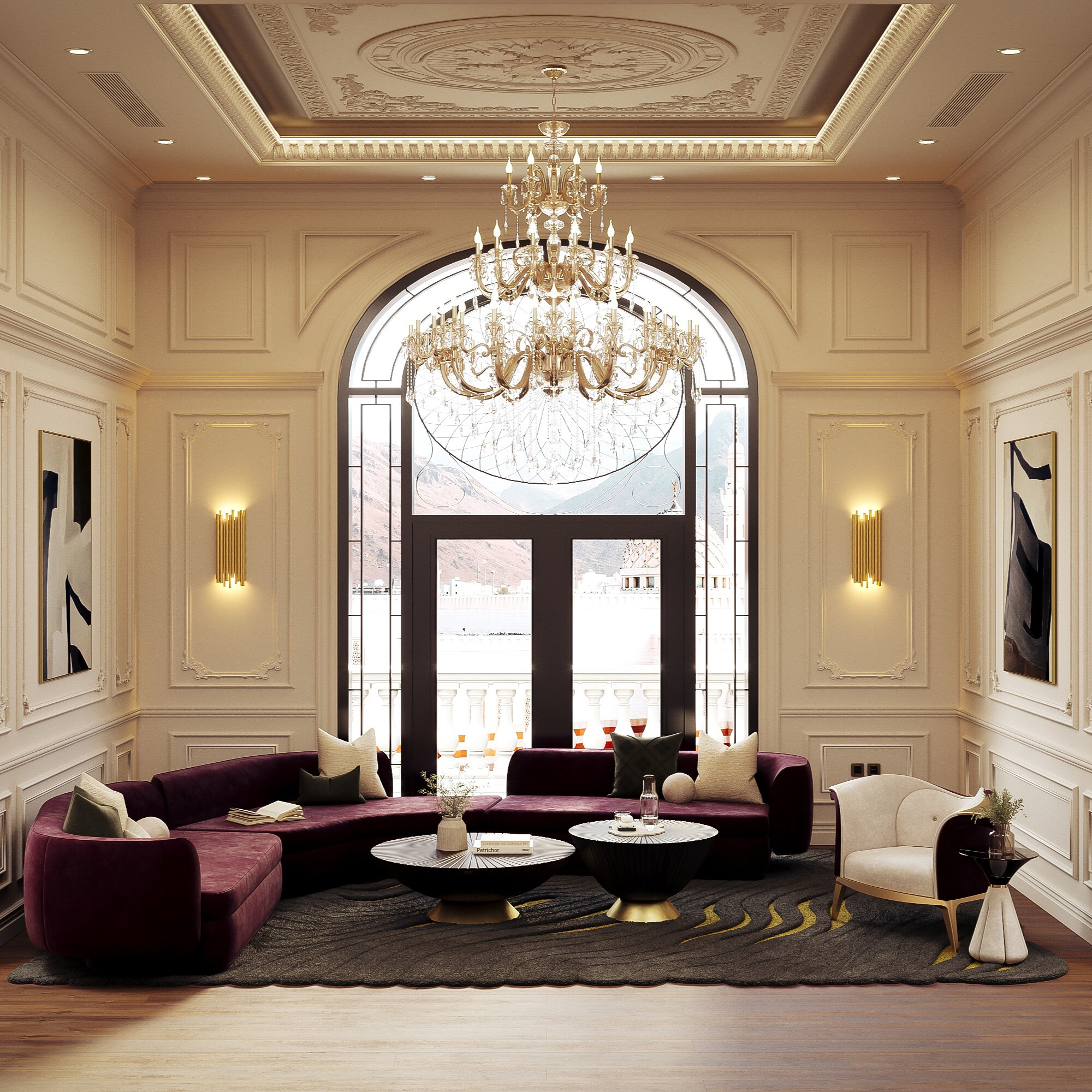
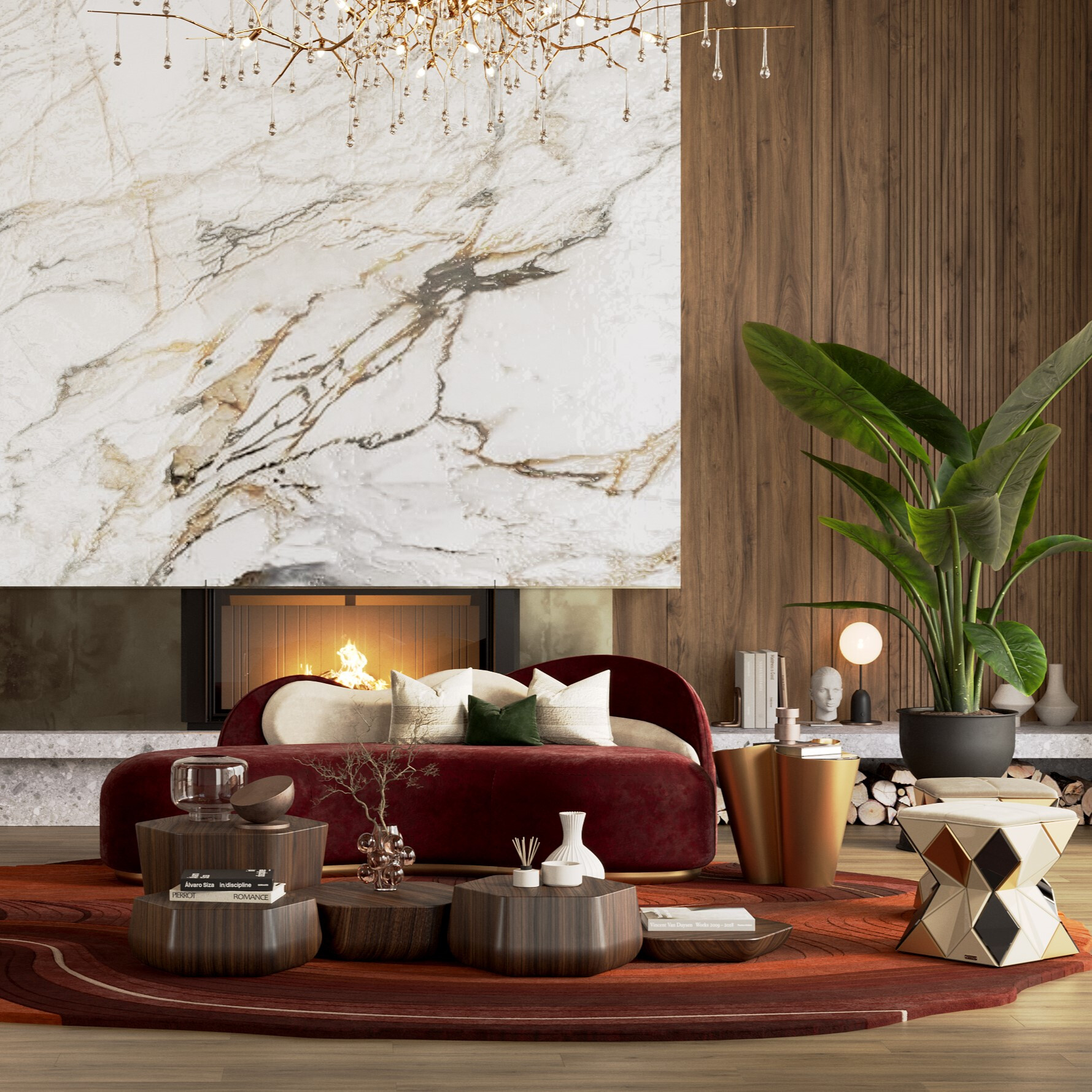
Understanding these psychological reactions is crucial for determining when to apply each approach. Symmetry creates relaxing and formal interiors, while asymmetry introduces energy and surprise. The balance between the two allows for harmonious interiors that can respond to both the need for order and the desire for novelty.
Knowing when to apply symmetry or asymmetry is crucial for transforming visual concepts into practical interior designs. The choice always depends on the desired effect, the style of the space, and the message you want to convey. However, this process is not linear: it presents challenges for interior designers, who must balance functionality, aesthetics, and emotion.
To facilitate the creative process, often the first step is to create a mood board where colours, materials, shapes, and furniture are tested. This tool allows you to anticipate how elements interact and predict the effect of visual balance before implementing it in the space.
Symmetry conveys order, stability, and sophistication. It's particularly effective in spaces that call for tranquillity and formality, as the human brain associates symmetry with balance and predictability.
Master bedrooms: Two identical bedside tables, each paired with a matching lamp, flank the bed, creating a balance that conveys serenity and rest.
Formal living rooms: Sofas or armchairs arranged opposite each other, with a central table, reinforce a classic composition and invite conversation.
Luxury hotels: Aligning mirrors or works of art in pairs on the side walls of an entrance hall creates a grand and welcoming atmosphere, marked by visual order.
Asymmetry creates movement, dynamism, and surprise. Unlike symmetry, which guides the eye toward the centre, asymmetry invites us to explore different points of space. It's a powerful tool for modern and creative projects.
Home offices: A large bookshelf with objects of varying sizes, balanced with an armchair like the Poseidon armchair by ALMA de LUCE, creates dynamism and stimulates creativity.
Contemporary living rooms: A large modular sofa offset by a sculptural lamp creates a sophisticated and unexpected ambiance.
Entertainment areas: Placing the television slightly off-centre and offsetting it with a large-scale artwork or floor plan creates a sense of movement and relaxation.
Ultimately, the decision isn't between symmetry or asymmetry, but between how the two can interact. The challenge for the designer is precisely this: to use visual balance as a language that responds to the client's needs and the character of the space.
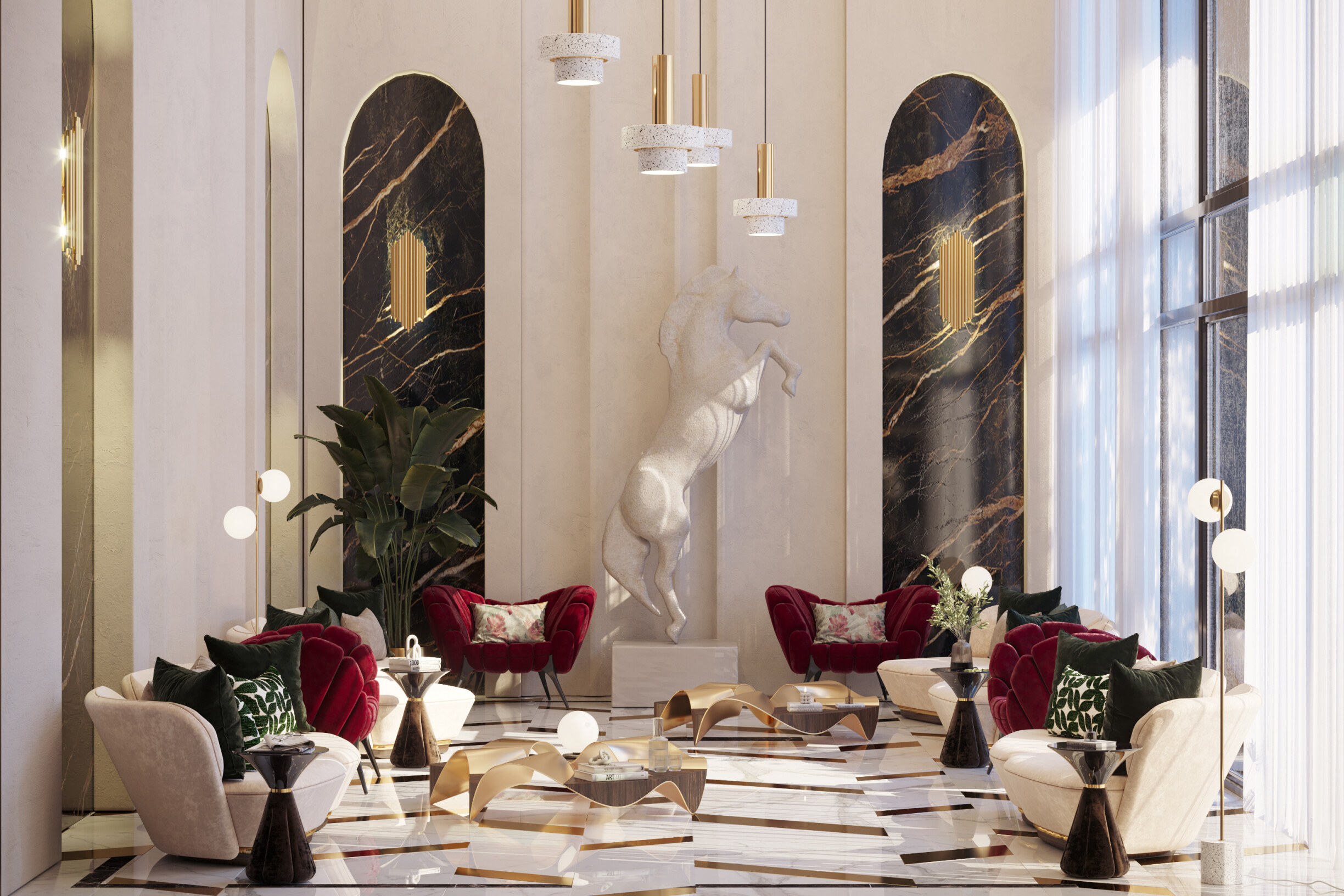
Symmetry and asymmetry are visual languages that tell distinct stories. Symmetry speaks of order, stability, and timeless beauty, resonating with the tranquillity of a classical temple or the perfection of nature. Asymmetry, with its dynamism and boldness, reminds us that movement and surprise are also part of life and artistic creation.
For interior designers, the challenge isn't choosing between one or the other, but understanding when each approach best serves the space and the desired narrative. It's in this dialogue that true harmony emerges: the kind that's not just visible but felt.
ALMA de LUCE's pieces are created precisely for this purpose: to function as anchor points in symmetrical spaces or as dissonant elements that balance asymmetrical compositions. More than objects, they are fragments of memory and culture that transcend borders and eras, capable of transforming a space into an experience.
Interior design is an invitation to contemplation: a play of mirrors and contrasts that echoes the past, projects itself into the future, and enriches the present. Between the serenity of symmetry and the energy of asymmetry, the key is to create harmonious interiors that reflect not only aesthetics, but also soul and purpose.
Are you ready to start exploring symmetry and asymmetry in your projects? Take the first step by visiting ALMA de LUCE's Pinterest to discover inspirations that best suit your needs, your tastes, or your client's desires.